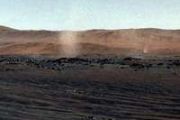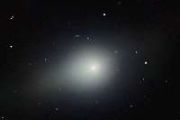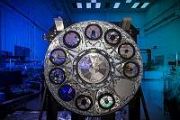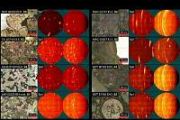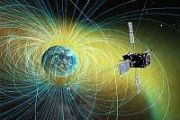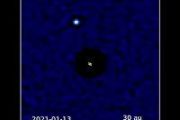
Copernical Team
Cosco Shipping Upgrades Fleet Safety with Iridium's Advanced GMDSS System
 Iridium Communications Inc. (NASDAQ: IRDM) has reported that Cosco Shipping (CSSC), the leading commercial fleet globally with 1,417 vessels, has initiated the integration of Iridium Global Maritime Distress and Safety System (GMDSS) terminals across its ships. The installation of the Lars Thrane LT-3100S terminal on the vessel Cosco Tengfei signifies CSSC's commitment to the paramount safety of
Iridium Communications Inc. (NASDAQ: IRDM) has reported that Cosco Shipping (CSSC), the leading commercial fleet globally with 1,417 vessels, has initiated the integration of Iridium Global Maritime Distress and Safety System (GMDSS) terminals across its ships. The installation of the Lars Thrane LT-3100S terminal on the vessel Cosco Tengfei signifies CSSC's commitment to the paramount safety of Comsat Architects and Ubotica Technologies Unite to Deploy AI in Orbit
 In a groundbreaking move, Comsat Architects, renowned for its pioneering work in space communications, has teamed up with Ubotica Technologies, leaders in autonomous AI satellite technology. This collaboration marks a significant step forward in the integration of Artificial Intelligence (AI) into space-based communication and Earth observation systems aboard small satellites in low Earth orbit,
In a groundbreaking move, Comsat Architects, renowned for its pioneering work in space communications, has teamed up with Ubotica Technologies, leaders in autonomous AI satellite technology. This collaboration marks a significant step forward in the integration of Artificial Intelligence (AI) into space-based communication and Earth observation systems aboard small satellites in low Earth orbit, AI-Enabled Satellites to Revolutionize Earth Observation and Communications
 In a landmark move, Comsat Architects has partnered with Ubotica Technologies to infuse artificial intelligence into space technologies, specifically focusing on enhancing the capabilities of small satellites in low Earth orbit for real-time Earth monitoring and intelligence.
Comsat Architects, offering expertise in space communication analysis, software development, and aerospace technolo
In a landmark move, Comsat Architects has partnered with Ubotica Technologies to infuse artificial intelligence into space technologies, specifically focusing on enhancing the capabilities of small satellites in low Earth orbit for real-time Earth monitoring and intelligence.
Comsat Architects, offering expertise in space communication analysis, software development, and aerospace technolo SpaceX Crew-7 Astronauts Complete Monumental 200-Day Science Expedition on ISS
 Four astronauts from NASA's SpaceX Crew-7 have safely returned to Earth, culminating a vital science expedition aboard the International Space Station (ISS). This mission, marking SpaceX's 7th crew rotation under NASA's Commercial Crew Program, witnessed an array of research and technology demonstrations led by the ISS National Laboratory designed to benefit humanity and foster commercial opport
Four astronauts from NASA's SpaceX Crew-7 have safely returned to Earth, culminating a vital science expedition aboard the International Space Station (ISS). This mission, marking SpaceX's 7th crew rotation under NASA's Commercial Crew Program, witnessed an array of research and technology demonstrations led by the ISS National Laboratory designed to benefit humanity and foster commercial opport "Owl Night Long" Expands Synspective's Constellation with Rocket Lab's Precision Delivery
 Rocket Lab USA, Inc. (Nasdaq: RKLB) has reported the successful launch of its 45th Electron rocket, reinforcing its partnership with Synspective by deploying another critical satellite into Synspective's Earth-observation constellation. The mission, dubbed "Owl Night Long," saw the Electron rocket take off from Pad B at Rocket Lab's Launch Complex 1 in New Zealand, at 04:03 NZDT on March 13, 202
Rocket Lab USA, Inc. (Nasdaq: RKLB) has reported the successful launch of its 45th Electron rocket, reinforcing its partnership with Synspective by deploying another critical satellite into Synspective's Earth-observation constellation. The mission, dubbed "Owl Night Long," saw the Electron rocket take off from Pad B at Rocket Lab's Launch Complex 1 in New Zealand, at 04:03 NZDT on March 13, 202 Japan space rocket explodes seconds after launch
 A rocket made by a Japanese company exploded seconds after launch on Wednesday, in a spectacular failure for the start-up's bid to put a satellite into orbit.
Tokyo-based Space One's 18-metre (60-foot) Kairos rocket blasted off in the coastal Wakayama region of western Japan, carrying a small government test satellite.
But around five seconds later, the solid-fuel rocket erupted in fire,
A rocket made by a Japanese company exploded seconds after launch on Wednesday, in a spectacular failure for the start-up's bid to put a satellite into orbit.
Tokyo-based Space One's 18-metre (60-foot) Kairos rocket blasted off in the coastal Wakayama region of western Japan, carrying a small government test satellite.
But around five seconds later, the solid-fuel rocket erupted in fire, Commercial rocket trying to put a satellite into orbit explodes moments after liftoff in Japan

A commercial rocket trying to put a satellite into orbit was intentionally exploded shortly after liftoff Wednesday morning in central Japan following a problem that's still under investigation.
Space One was aiming to be Japan's first private sector success at putting a satellite into orbit.
Online video showed the Kairos rocket blasting off in a mountainous area filled with trees then exploding five seconds later. A huge plume of smoke engulfed the area, and flames shot up in some spots. Spurts of water were shown trying to put out the blaze.
Live footage on public broadcaster NHK showed debris scattering from the sky and later charred pieces were shown strewn about on the ground.
The next space flight accident: How do we prevent it?

I recently watched NESC Deputy Director Mike Kirsch stand before a roomful of engineers at the Langley Research Center and tell them that with every passing day, NASA breaks a record: the longest stretch without a major accident in the nation's human spaceflight program since the Space Shuttle Columbia disintegrated during reentry on February 1, 2003. NASA's challenge, he told them, was to make sure the record keeps being broken.
Mike's sobering message set the perfect tone for my presentation of "Principles of Success in Spaceflight," the class I created with Victoria Kohl on the human behavior elements of success and failure in spaceflight projects.
Operational modal analysis of the Artemis I dynamic rollout test
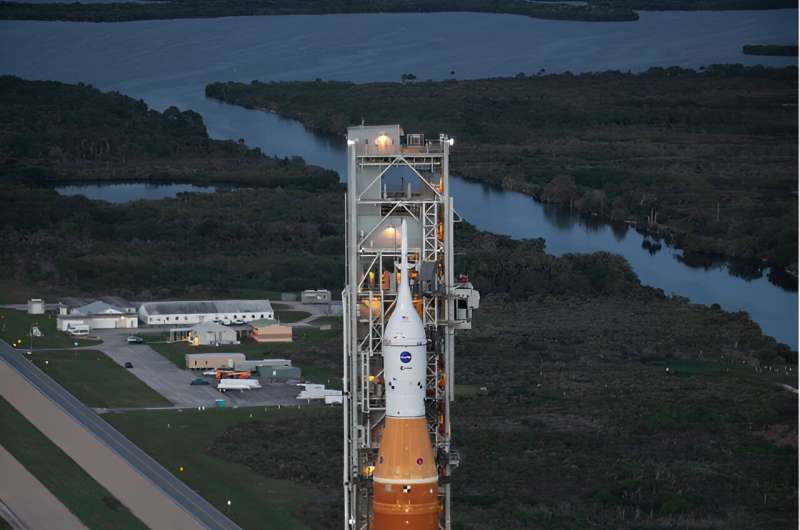
Operational modal analysis (OMA) techniques have been used to identify the modal characteristics of the Artemis I launch vehicle during the Dynamic Rollout Test (DRT) and Wet Dress Rehearsal (WDR) configuration prior to launch. Forces induced during rollout and on the launch pad are not directly measurable, thus necessitating a unique approach.
NASA is developing the SLS to support lunar and deep space exploration. SLS is integrated inside the Vehicle Assembly Building (VAB) on the mobile launcher (ML), which supports the integrated SLS launch vehicle during transport to the pad through lift-off. The ML also provides the fuel, power, and data umbilicals running to the SLS and Orion Multi-Purpose Crew Vehicle (MPCV), as well as crew access to the MPCV crew module.
The ML weighs ~10.6 million pounds and is over 380 feet tall. In the spring of 2022, the SLS was transported on the ML from the VAB to Launch Pad 39B (Figure 1) using the NASA crawler transporter (CT) to make this 4.2 mile trek, which takes ~8 hours.
Zero-boil-off tank experiments to enable long-duration space exploration
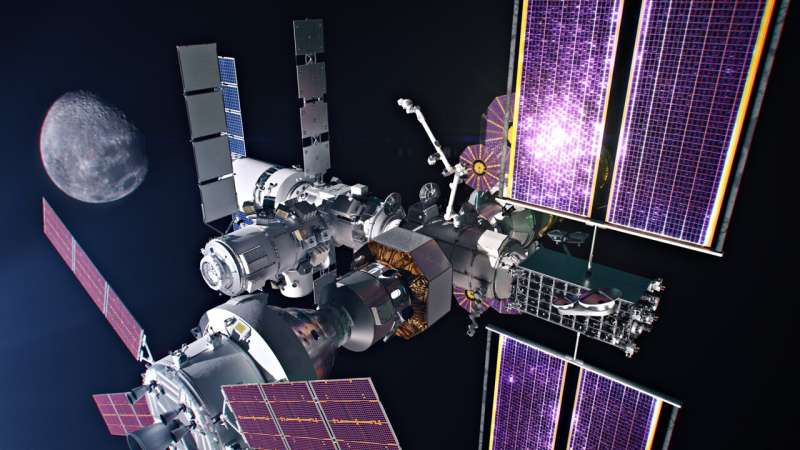
Do we have enough fuel to get to our destination? This is probably one of the first questions that comes to mind whenever your family gets ready to embark on a road trip. If the trip is long, you will need to visit gas stations along your route to refuel during your travel.
NASA is grappling with similar issues as it gets ready to embark on a sustainable mission back to the moon and plans future missions to Mars. But while your car's fuel is gasoline, which can be safely and indefinitely stored as a liquid in the car's gas tank, spacecraft fuels are volatile cryogenic liquid propellants that must be maintained at extremely low temperatures and guarded from environmental heat leaks into the spacecraft's propellant tank.
And while there is already an established network of commercial gas stations in place to make refueling your car a cinch, there are no cryogenic refueling stations or depots at the moon or on the way to Mars.




